Discovery of the mosaic
The mosaic was first excavated in 1996 by Miriam Avissar of the Israel Antiquities Authority.
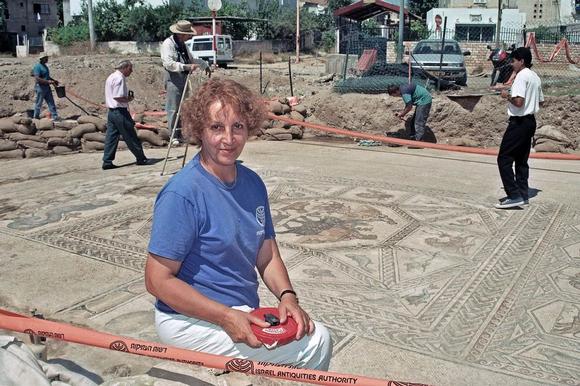 Miriam Avissar -1996
Miriam Avissar -1996
Conservation in–situ of the mosaic
Immediately after the discovery of the mosaic a conservation team from the Conservation Department of the Israel Antiquities Authority monitored the progress of the excavations and provided expertise and in-situ conservation treatment of the mosaic.
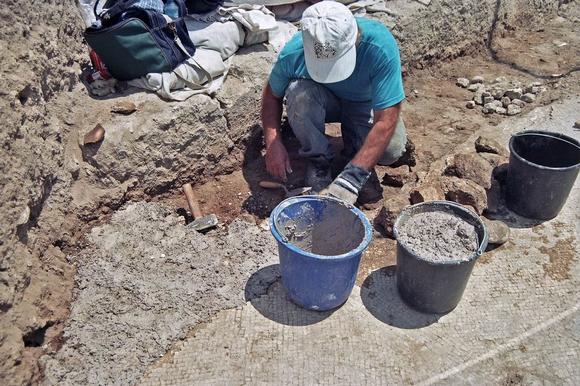 Conservation in-situ 1996
Conservation in-situ 1996 At this stage, the following was accomplished:
- Documentation of the mosaic including rectified photography, graphic documentation, 1:1 documentation, condition report, and conservation plan
- Cleaning of the mosaic
- Consolidation of the edges and lacunae using lime mortars
- Grouting of detached areas and voids
- Re-laying of loose tesserae
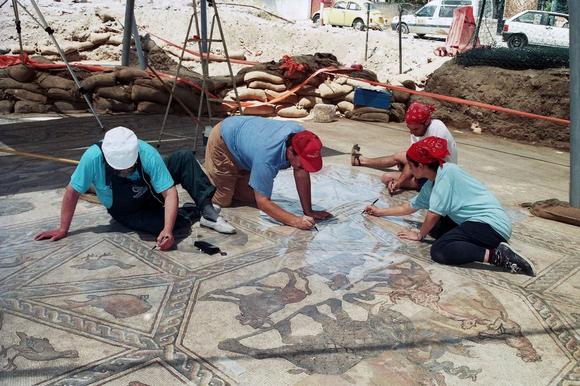 Documenting the mosaic 1:1 - 1996
Documenting the mosaic 1:1 - 1996 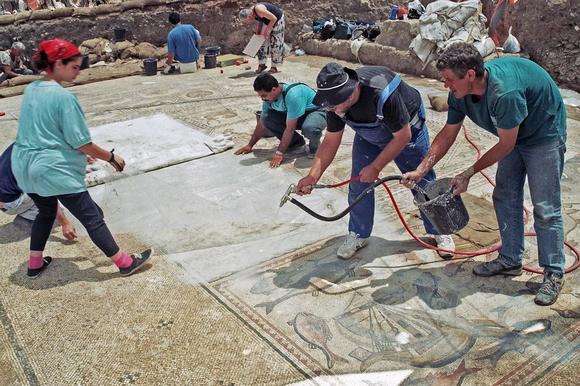 Applying of poultice for cleaning - 1996
Applying of poultice for cleaning - 1996 Reburial of the mosaic
The mosaic was reburied in 1996 using the following system:
- Two layers of white geo textile fabric (stitch bonded, 400g/m2) on the mosaic surface, in between a layer of plastic mesh (1x1cm openings)
- The geo textile was covered with 10cm layer crushed basalt stone (residues from the stone quarry of Beit Alpha).
- The final layer (1.5m) was done with soil and debris from the excavations of the site.
- All the site was covered with a pile (2m high) of soil and debris to prevent theft and soil removal from the reburial.
 Reburial of the mosaic 1996
Reburial of the mosaic 1996 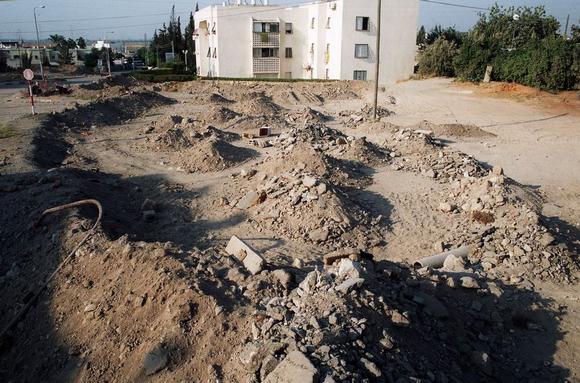 The site after the reburial 1996
The site after the reburial 1996 Conservation: 1 | 2 | 3 | 4 | 5 | 6 | 7 | 8 | 9 | 10 | 11 | Next page




